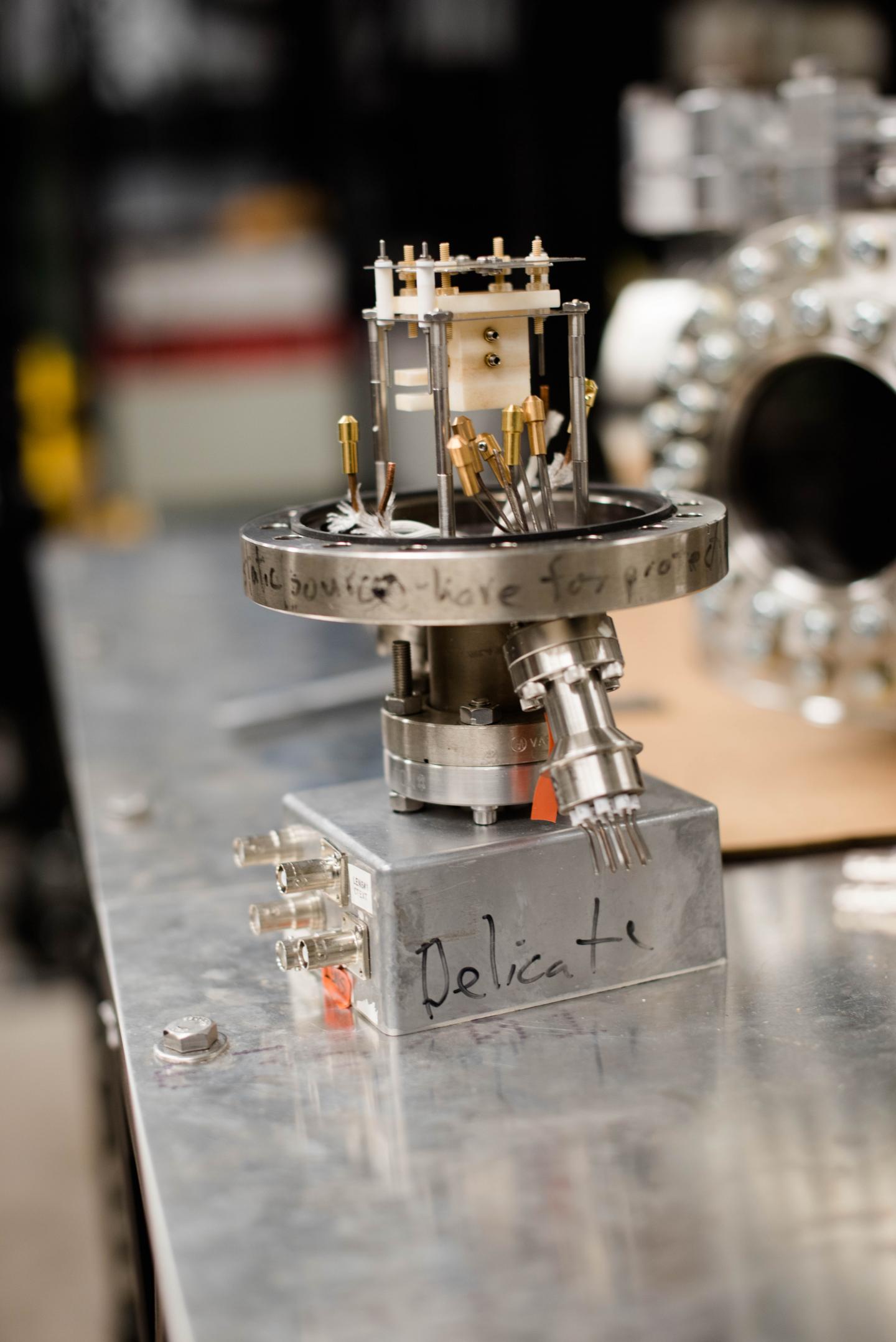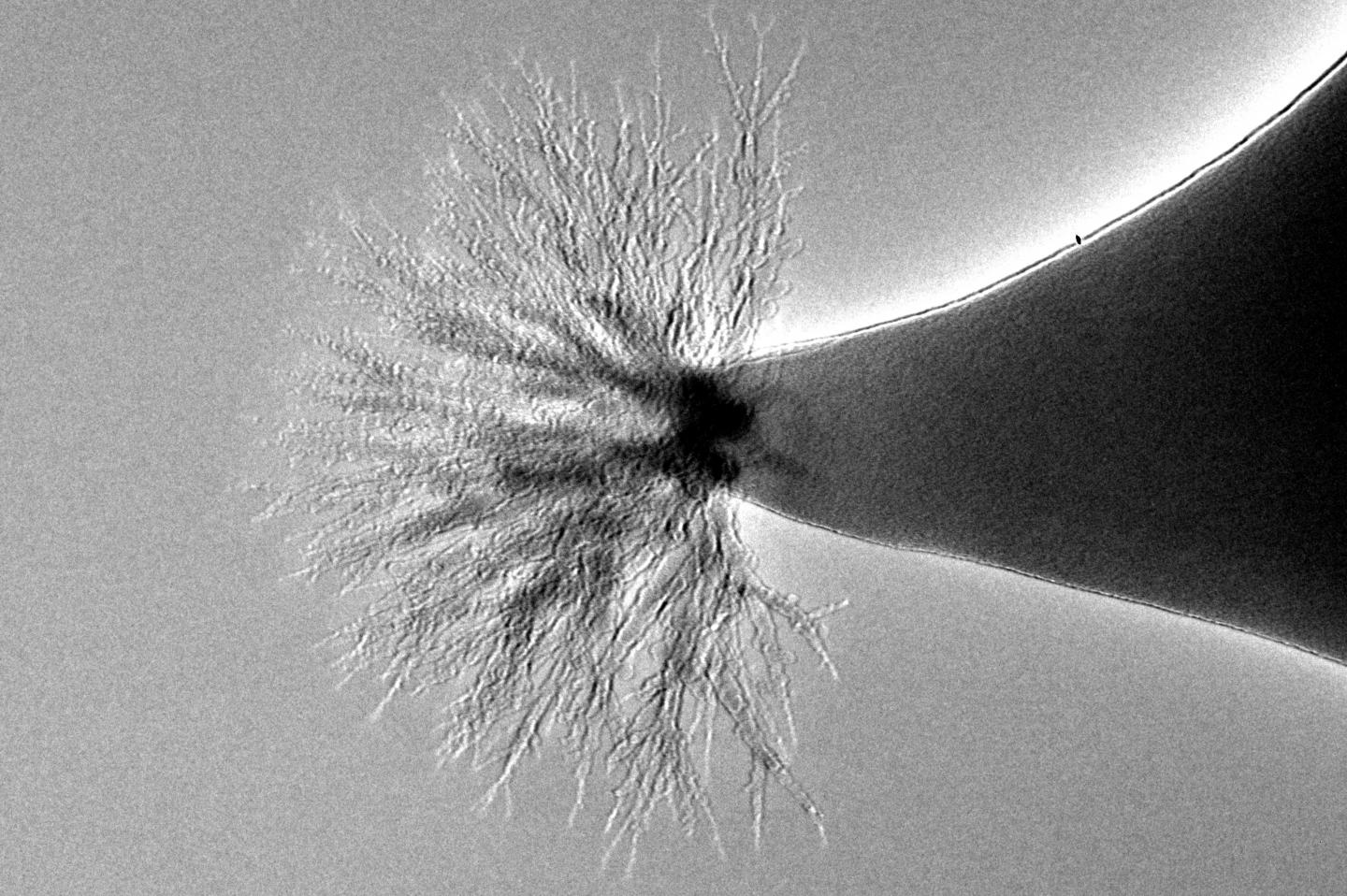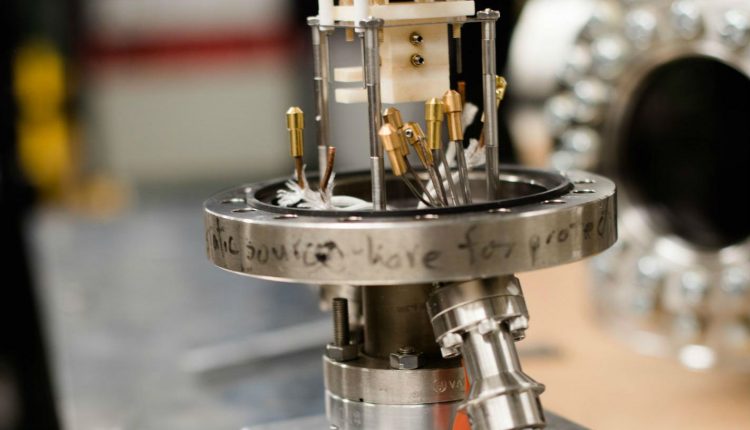Tiny ion rockets could propel spacecraft to nearby planets
Now you can watch a tiny satellite ion rocket under a microscope to see how it works.
Researchers at the University of Maryland and Michigan Technological University have been working on the rocket, called an electrospray thruster, which is basically just a drop of molten salt. When electricity is applied to the rocket, it creates a field on the tip which facilitates a stream of ions.

While the force created by the rocket is less than the weight of a human hair, in the vacuum of space it is enough to push a small object forward with a constant acceleration. Many of these tiny thrusters packed together could propel a spacecraft over great distances, maybe even to the nearest exoplanet, and they are particularly useful for Earth-orbiting nanosatellites, which can be as small as a shoe box.
The thrusters are currently being tested on the European Space Agency’s LISA Pathfinder, which hopes to place objects in space so precisely that they would only be disturbed by gravitational waves.
The only problem with the droplet engines is that they sometimes form needle-like spikes that disrupt the way the thruster works by getting in the way of the ions flowing outward and turn the liquid to a gel.
Michigan Tech engineers Lyon B. King and Kurt Terhune wanted to find out how this actually happens in their recent research, which can be seen in the video below.
The engineers turned to John Cumings, known for his work in this field, at the University of Maryland to overcome the challenge by making measurements of features as small as a few molecules in the presence of a strong electric field.
“Getting a close look at these droplets is like looking through a straw to find a penny somewhere on the floor of a room–and if that penny moves out of view, like the tip of the molten salt needles do–then you have to start searching for it all over again,” said King.

The team put the tiny thruster in a transmission electron microscope, which is capable of viewing things down to millionths of a meter. What they saw was that the droplet elongated and sharpened to a point, and then started emitting ions. Then the tree-like defects began to appear.
According to the researchers, figuring out why these branched structures grow could help prevent them from forming. The problem occurs when high-energy electrons, like those used in the microscope’s imaging beam, impact the fluid causing damage to the molecules that they strike. This damages the molten salt’s molecular structure, so it thickens into a gel and no longer flows properly.
“We were able to watch the dendritic structures accumulate in real time,” says Kurt Terhune, a mechanical engineering graduate student and the study’s lead author. “The specific mechanism still needs to be investigated, but this could have importance for spacecraft in high-radiation environments.”


Comments are closed, but trackbacks and pingbacks are open.